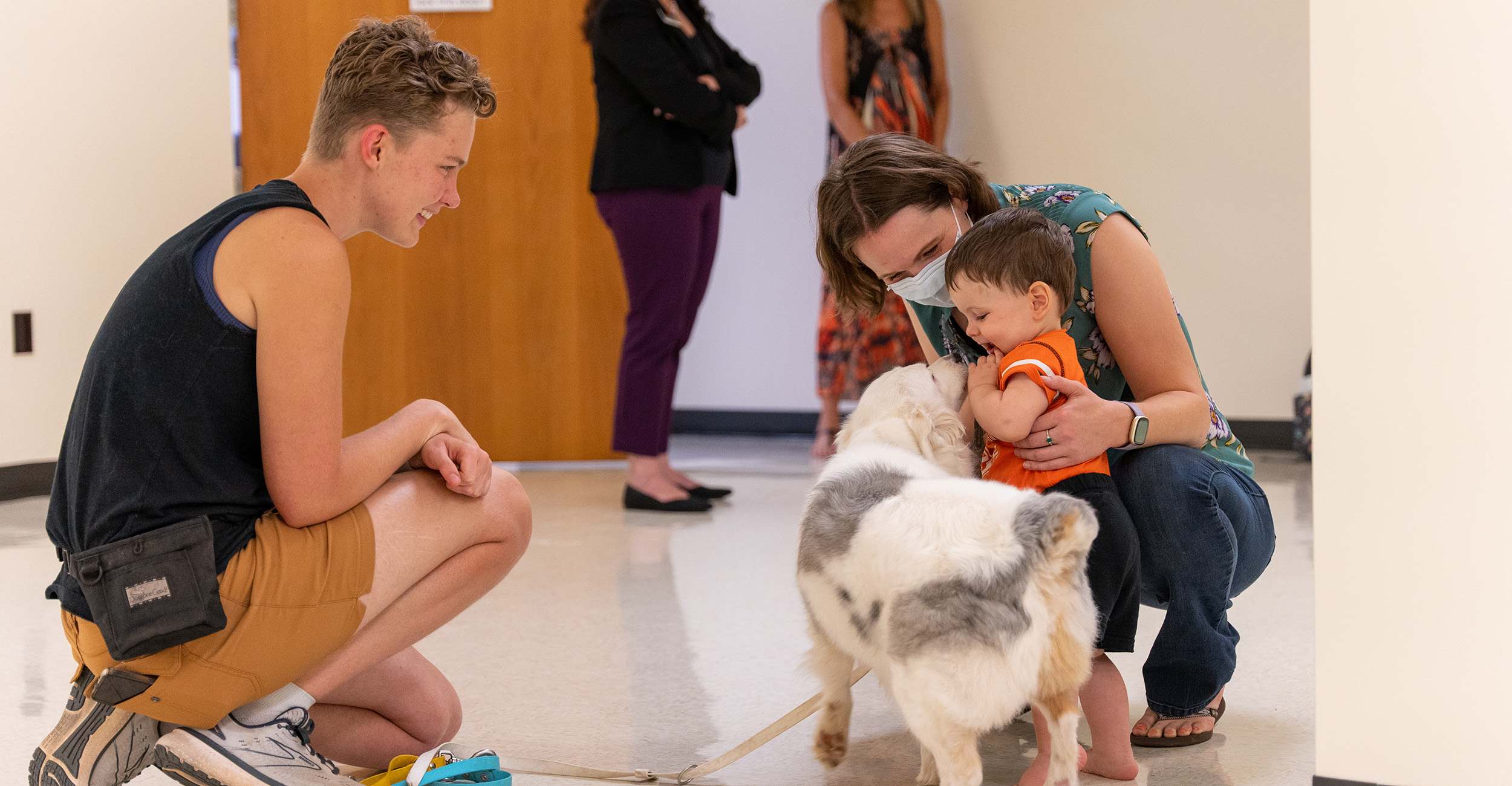
Canines and Kids: A guide to preparing your dog for the new baby
Tuesday, October 31, 2023
Media Contact: Taylor Bacon | Public Relations and Marketing Coordinator | 405-744-6728 | taylor.bacon@okstate.edu
Children are two to three times more likely to be bitten by a dog than an adult. Most fatal dog attacks are toward babies under 2 years old. Other bites are most likely to occur with children between the ages of 5 and 9. Most of these incidences are related to resource guarding with around 43% specific to food guarding. It is crucial to separate children from dogs during feeding time.
Before baby arrives, there are steps you can take to prepare.
- Make a positive association with baby items such as strollers and swings, as well as baby sounds such as crying. Remember, if the dog is unfamiliar with the different sounds and changes in the routine, the dog will not understand why the changes happened or why there is a new being in the house that smells different and sounds weird.
- Leave the stroller around the house in a high-traffic area such as the living room so the dog gets used to its presence.
- You can also get a baby doll and carry it around the house at times, and place it in the stroller, crib or other places the baby will frequent. Getting the dog used to seeing you carrying someone around the house will help the dog not be so curious about the real baby, even though dogs know the difference in odor and can tell it’s not a real being you are carrying.
- Make sure the dog has its own toys that are safe and appropriate for the dog, and the baby only has access to the baby’s toys. A toddler should never try to take a toy or food item from the dog as these inappropriate interactions are the biggest cause of bites towards children.
- Dogs and babies should not be the ones making decisions, so they should not be left alone together unsupervised.
- Even under supervision, the interaction may not be appropriate. Teach the child how to respect the dog’s boundaries by not forcing them to interact in ways that could upset the dog. Avoid behaviors such as putting babies on top of dogs, letting the dog in the crib, or putting the baby and dog in a playpen together. Interactions like pulling hair, grabbing the dog’s tail, pulling ears and poking are ones that cause many of the bites towards children.
- Try to avoid giving more attention to the baby than the dog. This can be hard, as you will be busy with the baby most of the time, but it is important for the dog to receive attention also.
- Take the dog on walks daily and, if you have extra help, walk the dog alongside the baby in the stroller, so both are out doing something together in a supervised and controlled manner.
Bringing home a new baby comes with a lot of changes and can certainly be nerve-wracking for new parents. Add canine companions into the mix and there can be a lot of concerns. New parents can set themselves up for success by using these tips to prepare. If you have questions or concerns regarding your dog’s interactions with your child or you are facing behavior issues related to the relationship, contact the behavior service at 405-744-7000.
About the author: Dr. Leticia Fanucchi is a clinical assistant professor at Oklahoma State University's College of Veterinary Medicine. She is the head of the behavior service at the OSU Veterinary Medical Teaching Hospital. Her research interests are applied behavior and animal well-being.
